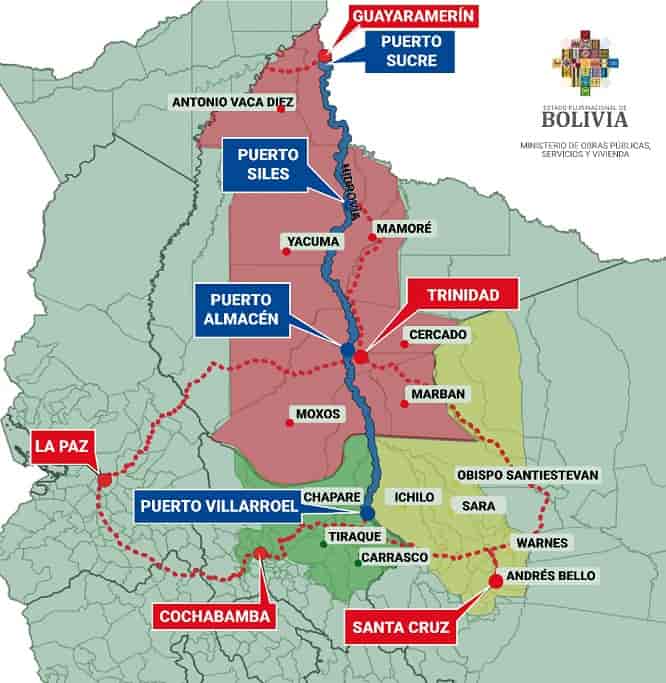RIO DE JANEIRO, BRAZIL – The improvement works in the Ichilo-Mamoré waterway, which articulates the center of the country with the Bolivian Amazon region of the Beni department, seek to make this route navigable all year round and serve as an export channel to the Atlantic.

“This new waterway that is proving to be efficient will be successful to the extent that its costs are competitive” and joins “other possibilities that are already in operation” as the Paraguay-Parana, told Efe Wednesday the manager of the Bolivian Institute of Foreign Trade (Ibce), Gary Rodriguez.
For Rodriguez, given its Mediterranean condition, Bolivia “must develop” all the possibilities to facilitate transport logistics for its import and export trade.
This waterway connects with the old “rubber route” of the Madera River, which when it joins the Amazon flows into the Atlantic, explained the economist, who valued the state initiative and the interest of the country’s private business sector.
The day before, the Government carried out an act for the beginning of cleaning operations for this waterway that joins Puerto Villarroel, in Cochabamba, in the center of the country, with Guayaramerín, in the Bolivian Amazonian north, in the middle of the border with Brazil.
The goal of these works is to guarantee the navigability of this route throughout the year and to allow the transport of goods from the interior to the border, explained the national authorities.
At the same time, this Tuesday a cargo of 60 tons of wood sailed to France and for this Wednesday another shipment of the same dimension was programmed to the United States, both with a value of about 173 million dollars, informed the Ministry of Public Works.
Among the export alternatives offered by this route are potassium chloride, urea or soybeans and will imply a reduction of up to 40 percent in transportation costs, said the Ministry.
According to Rodríguez, this work will involve constant dredging of the waters to guarantee the passage of vessels, in addition to the construction of ports for the dispatch of goods in order to achieve the desired competitiveness.
In a previous operation, last July 5, this commercial axis was tested with the transport of 60 tons of cement, something that, according to Bolivian authorities, connects in a better way the trade between the departments of Cochabamba and Beni and implies the reduction of costs and time of these transfers.


